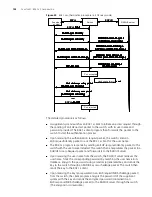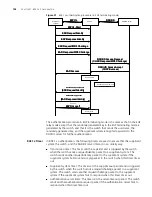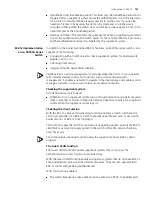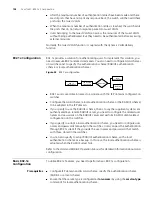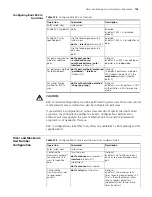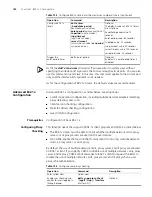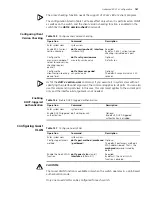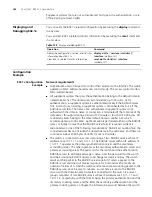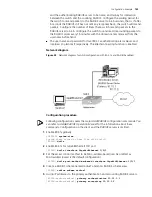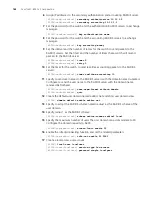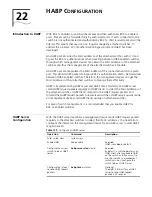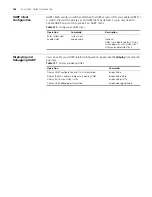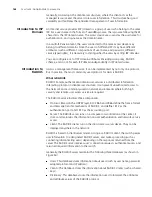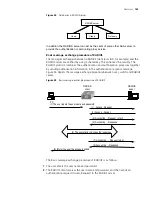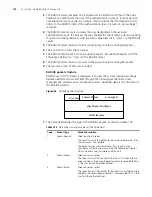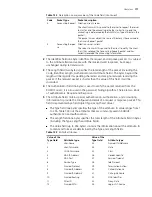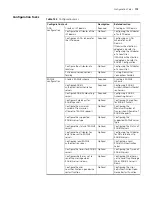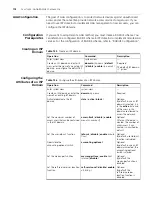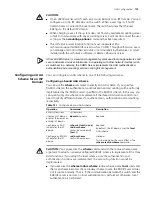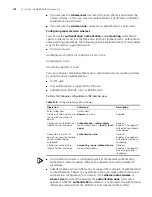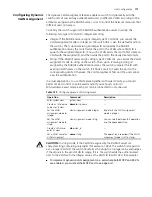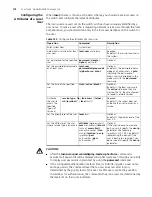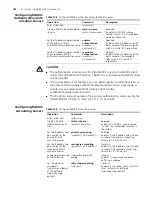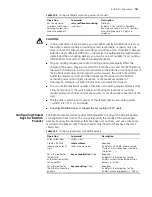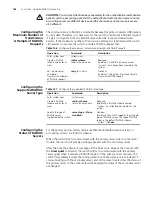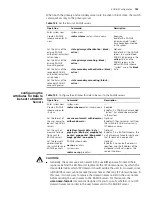
168
C
HAPTER
23: AAA&RADIUS C
ONFIGURATION
Generally, AAA adopts the client/server structure, where the client acts as the
managed resource and the server stores user information. This structure has good
scalability and facilitates the centralized management of user information.
Introduction to ISP
Domain
An Internet service provider (ISP) domain is a group of users who belong to the same
ISP. For a user name in the format of
userid@isp-name
, the
isp-name
following the
@
character is the ISP domain name. The access device uses
userid
as the user name for
authentication, and
isp-name
as the domain name.
In a multi-ISP environment, the users connected to the same access device may
belong to different domains. Since the users of different ISPs may have different
attributes (such as different compositions of user name and password, different
service types/rights), it is necessary to distinguishes the users by setting ISP domains.
You can configure a set of ISP domain attributes (including AAA policy, RADIUS
scheme, and so on) for each ISP domain independently in ISP domain view.
Introduction to
RADIUS
AAA is a management framework. It can be implemented by not only one protocol.
But in practice, the most commonly used protocol for AAA is RADIUS.
What is RADIUS
RADIUS (remote authentication dial-in user service) is a distributed information
interacting protocol in client/server structure. It can prevent unauthorized access to
the network and is commonly used in network environments where both high
security and remote user access service are required.
The RADIUS service involves three components:
■
Protocol: Based on the UDP/IP layer, RFC 2865 and 2866 define the frame format
and message transfer mechanism of RADIUS, and define 1812 as the
authentication port and 1813 as the accounting port.
■
Server: The RADIUS server runs on a computer or workstation at the center. It
stores and maintains the information on user authentication and network service
access.
■
Client: The RADIUS clients run on the dial-in access server device. They can be
deployed anywhere in the network.
RADIUS is based on client/server model. Acting as a RADIUS client, the switch passes
user information to a designated RADIUS server, and makes processing (such as
connecting/disconnecting users) depending on the responses returned from the
server. The RADIUS server receives user's connection requests, authenticate users, and
return all required information to the switch.
Generally, the RADIUS server maintains the following three databases (as shown in
Figure 54):
■
Users: This database stores information about users (such as user name, password,
adopted protocol and IP address).
■
Clients: This database stores the information about RADIUS clients (such as shared
keys).
■
Dictionary: This database stores the information used to interpret the attributes
and attribute values of the RADIUS protocol.
Содержание 4200G 12-Port
Страница 10: ...8 CONTENTS...
Страница 14: ...4 ABOUT THIS GUIDE...
Страница 46: ...32 CHAPTER 5 LOGGING IN THROUGH WEB BASED NETWORK MANAGEMENT SYSTEM...
Страница 48: ...34 CHAPTER 6 LOGGING IN THROUGH NMS...
Страница 60: ...46 CHAPTER 9 VLAN CONFIGURATION...
Страница 64: ...50 CHAPTER 10 MANAGEMENT VLAN CONFIGURATION...
Страница 80: ...66 CHAPTER 13 GVRP CONFIGURATION...
Страница 98: ...84 CHAPTER 15 LINK AGGREGATION CONFIGURATION...
Страница 112: ...98 CHAPTER 18 MAC ADDRESS TABLE MANAGEMENT...
Страница 126: ...112 CHAPTER 19 LOGGING IN THROUGH TELNET...
Страница 162: ...148 CHAPTER 20 MSTP CONFIGURATION...
Страница 274: ...260 CHAPTER 29 IGMP SNOOPING CONFIGURATION...
Страница 276: ...262 CHAPTER 30 ROUTING PORT JOIN TO MULTICAST GROUP CONFIGURATION...
Страница 298: ...284 CHAPTER 33 SNMP CONFIGURATION...
Страница 304: ...290 CHAPTER 34 RMON CONFIGURATION...
Страница 338: ...324 CHAPTER 36 SSH TERMINAL SERVICES...
Страница 356: ...342 CHAPTER 38 FTP AND TFTP CONFIGURATION...
Страница 365: ...Information Center Configuration Example 351 S4200G terminal logging...
Страница 366: ...352 CHAPTER 39 INFORMATION CENTER...
Страница 378: ...364 CHAPTER 40 BOOTROM AND HOST SOFTWARE LOADING...
Страница 384: ...370 CHAPTER 41 Basic System Configuration and Debugging...
Страница 388: ...374 CHAPTER 43 NETWORK CONNECTIVITY TEST...
Страница 406: ...392 CHAPTER 45 CONFIGURATION OF NEWLY ADDED CLUSTER FUNCTIONS...
Страница 422: ...408 CHAPTER 48 UDP HELPER CONFIGURATION...

